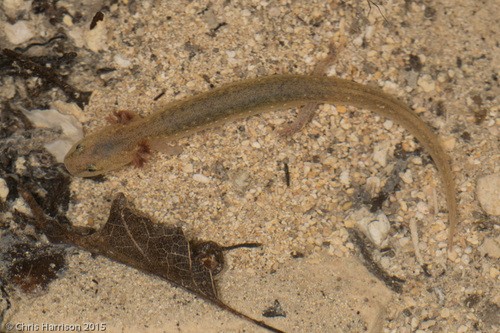Texas salamander
A species of Brook salamander Scientific name : Eurycea neotenes Genus : Brook salamander
Texas salamander, A species of Brook salamander
Scientific name: Eurycea neotenes
Genus: Brook salamander
Content
Description General Info
Description
Eurycea neotenes (the Texas salamander, Bexar County salamander, Edwards Plateau salamander, or Texas neotenic salamander) is a species of entirely aquatic, lungless salamander native to the United States. It is endemic to central Texas, near Helotes, in Bexar County.
General Info
Lifespan
10-15 years
Diet
Texas salamander is an insectivorous species, primarily feeding on small crustaceans and insect larvae. Detailed observation affirms that its diet heavily leans towards aquatic invertebrates, prominently including Ostracods and Amphipods.
Appearance
Texas salamander are small, slender salamanders with delicate wet skin. They have a length between 2.5 and 3.5 inches. Their color is generally a muted yellow-brown or dark brown, often with a lighter underbelly. Their small size, slender bodies, long tails, and distinctive coloration make them unmistakable among their kind. No significant differences in appearance are noted due to age, gender, or subspecies.
Behavior
Texas salamander exhibits primarily aquatic behavior, engaging in foraging within creeks, streams, and spring habitats. A solitary species, it marks its territory with secretions from the skin and tactile behavior. Crucially, this nocturnal salamander also demonstrates unique hiding habits for survival, often camouflaging among aquatic vegetation and debris.
Scientific Classification
Phylum
Chordates Class
Amphibians Order
Salamanders Family
Lungless salamanders Genus
Brook salamander Species
Texas salamander 